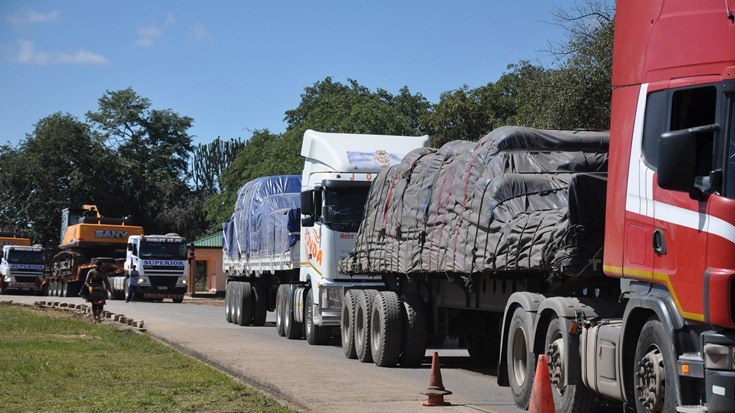LUSAKA, June 17, 2014– Zambia is set to continue its economic growth above 6%, driven largely by copper investments and supported by domestic demand, but the country is also facing growing risks, according to the Zambia Economic Brief released today.
The report, Promoting Trade and Competiveness: What Can Zambia Do?, cautions that the changing external conditions such as declining copper prices, and the tightening of international financial conditions are likely to lead to higher borrowing costs and pose growing risks that could lower investment and growth.
Although the report acknowledges the steps the government is taking to contain and reduce future fiscal deficits, it also outlines the difficult steps that lie ahead, such as:
- Fuel subsidy: Fuel prices have been adjusted twice to reflect costs. How can that stance be maintained?
- Agriculture subsidies: Decision to restrict FRA reserves to 0.5 million MT is in the right direction, but implementation is key, including ensuring that grain is bought at market prices.
- Public wage bill: Wage freeze has provided some time. The challenge is to use that time to put a sustainable structure in place.
- Public investment: Project appraisal is important to ensure value for money.
Kundhavi Kadiresan, the World Bank country director for Zambia, Malawi and Zimbabwe, said government officials need to take a closer look at its public investment program to ensure good value for money through project appraisal.
“It is of great importance for Zambia to maintain this direction in order to consolidate its fiscal position, in the face of difficult choices that lie ahead,” she said.
Fredson Yamba, secretary of the Treasury, said the government is committed to reducing fiscal deficit.
“The goal is to stay within the budgeted deficit of 5.2% in 2014, and to reduce it further to 3% by 2016,” he said.
On promoting trade and competitiveness, the report highlights that the country is doing well on exports. The non-copper merchandise exports have grown briskly (22% p.a. during 2002-12) alongside copper exports (29%). Agriculture exports such as sugar, tobacco, wheat, soybean and maize have grown at 27% p.a. since 2000. The number of exporting firms, products, and destinations has also grown fast.
However, Kadiresan expressed concern that exporting firms have very low export survival rates. For any 100 exporters in a given year, 50 have not exported in the previous year and 41 exit in the following year.
“This does not allow firms to consolidate their position,” she said. “There is need to think what can be done to improve the survival rate of Zambian exports.”
Trade also plays an important role for the poor, according to the report. As the government focuses on poverty, small traders that make a living out of cross-border trade should also be considered, the report says. Many of the small traders are women and the small earnings are only source of incomes for their families, but their small incomes are diminished even further by the bribes they have to pay to local officials while crossing borders. Reducing costs for small traders would move more cross-border trade into formal channels.
In addition, the report points out that high trade costs associated with crossing borders impose constraints on trade. While the government is already working to improve clearance times and border operations, the report notes that the enactment and implementation of the Border Management Bill will help improve border operations.
Unpredictable agriculture trade policies and FRA interventions hurt Zambia in many ways, the report says. Trade bans and restrictions come in the way of developing export markets. Trade restrictions seemingly keep domestic prices low, but contribute to food price volatility that hurts the poorest most. Along with FRA interventions, the report says trade restrictions lead to inefficient production and investment decisions such as large farmers underutilizing maize capacity since mid-2000s. They deter large and small farmers from making long-term investments and the private sector from investing in input supply, storage, and marketing. The report recommends that Zambia adopt a stepwise approach of moving towards an open borders policy for maize. A predictable policy environment will enhance maize production and food security.
“The government has adopted the policy of open borders for maize exports during 2014 and this is likely to continue in the coming years to allow farmers plan their production,” said Wylbur Simuusa, minister of Agriculture and Livestock.
On the competitiveness of mining, the report shows that the demand for mining-related goods and services soared in the past decade because of investments, but the share of Zambian suppliers remains low (around 4% of total local sourcing worth $2.5-4 billion in 2012). There are a large number of suppliers, but value addition is low. Most suppliers are also traders and distributors.
Zambian suppliers find it hard to break into sophisticated supply chains of mining companies. Developing competitiveness is constrained by skills scarcity and gaps that prevent firms from technological upgrading, low capital investment by local service providers and structural cost-raising factors common to other sectors of the economy, such as border costs and access to capital.
“A strong institutional partnership is needed between government, mining companies, and local suppliers to build confidence and transparency in this sector in order to increase local value-added content for job creation, expand the number of new entrants in the mining supply chain and to also expand market opportunities for existing suppliers,” said Praveen Kumar, World Bank lead economist in Zambia.
